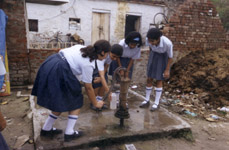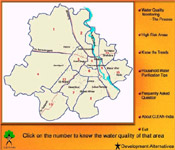|
Water Is Precious |
Water is essential for our very existence. Over one billion people round the world lack safe water, 80% of infectious diseases are water borne killing millions of children each year. There arises an urgent need for understanding the status of drinking water quality and its management. Thus, to understand the prevalent water quality in our country, CLEAN-India, a nation wide environment assessment, awareness and action programme for school children has taken up the task of seasonally assessing the drinking water quality, making people aware, and implement possible remedial measures. The programme involves school children as the best medium of information gathering and dissemination. With a vision to make the future citizens understand the importance of good quality water, CLEAN-India member students are trained to monitor the drinking water quality and on using Jal TARA water testing kit. Jal TARA is an easy to operate water quality testing kit developed by Development Alternatives and can perform basic tests to ensure that water is fit for drinking, domestic and other purposes. The kit can test 14 essential parameters for drinking and river water quality. These include simple tests to assess the levels of specific physical, chemical and biological components. Students collect municipal and ground water samples from various places like slums, low income colonies, market places, religious places, industrial areas and residential colonies. |

|
